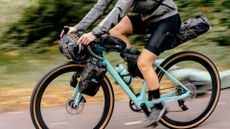Lazer CityZen KinetiCore helmet review - comfortable and safe
The dedicated light mount is cheaper than fully integrating the lights - and gives you a wider range of options
- (opens in new tab)
- (opens in new tab)
- (opens in new tab)
- Sign up to our newsletter Newsletter
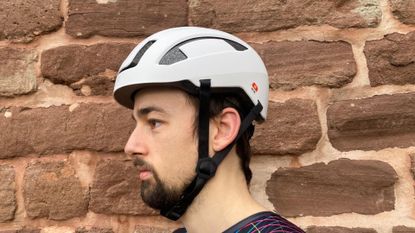
The Lazer CityZen with KinetiCore tech is a solid commuting helmet that represents good value for money. Comfort is good and ventilation is okay - the air flow isn't the best, but for the intensity of commuter riding it was perfectly sufficient. It's highly rated for crash protection, both direct impacts and rotational, though the finish doesn't feel quite as nice as that of some of its (more expensive) competitors.
-
+
Great value
-
+
Smart colour options
-
+
Big size range
-
+
Comfortable and good fit
-
+
Loads of safety tech
-
-
Venting is limited
-
-
Safety score is not as high as top end Lazer helmets
-
-
Looks big on the head
-
-
Some possible concerns about the shell coming away from the foam
Why you can trust Cycling Weekly Our expert reviewers spend hours testing and comparing products and services so you can choose the best for you. Find out more about how we test.

The Lazer CityZen KinetiCore is the Belgian brand's latest commuter offering and is designed for city cyclists of all stripes.
Whereas the best road cycling helmets prize aerodynamics and the lightest of weights, the focus of the best commuter bike helmets is more on the practical usability aspects - such as comfort, visibility and any neat little extra touches, such as the Lazer CityZen KinetiCore's ability to be locked to your bike with a standard D-Lock. Here's how the new lid stacked up...
Lazer CityZen KinetiCore: Construction
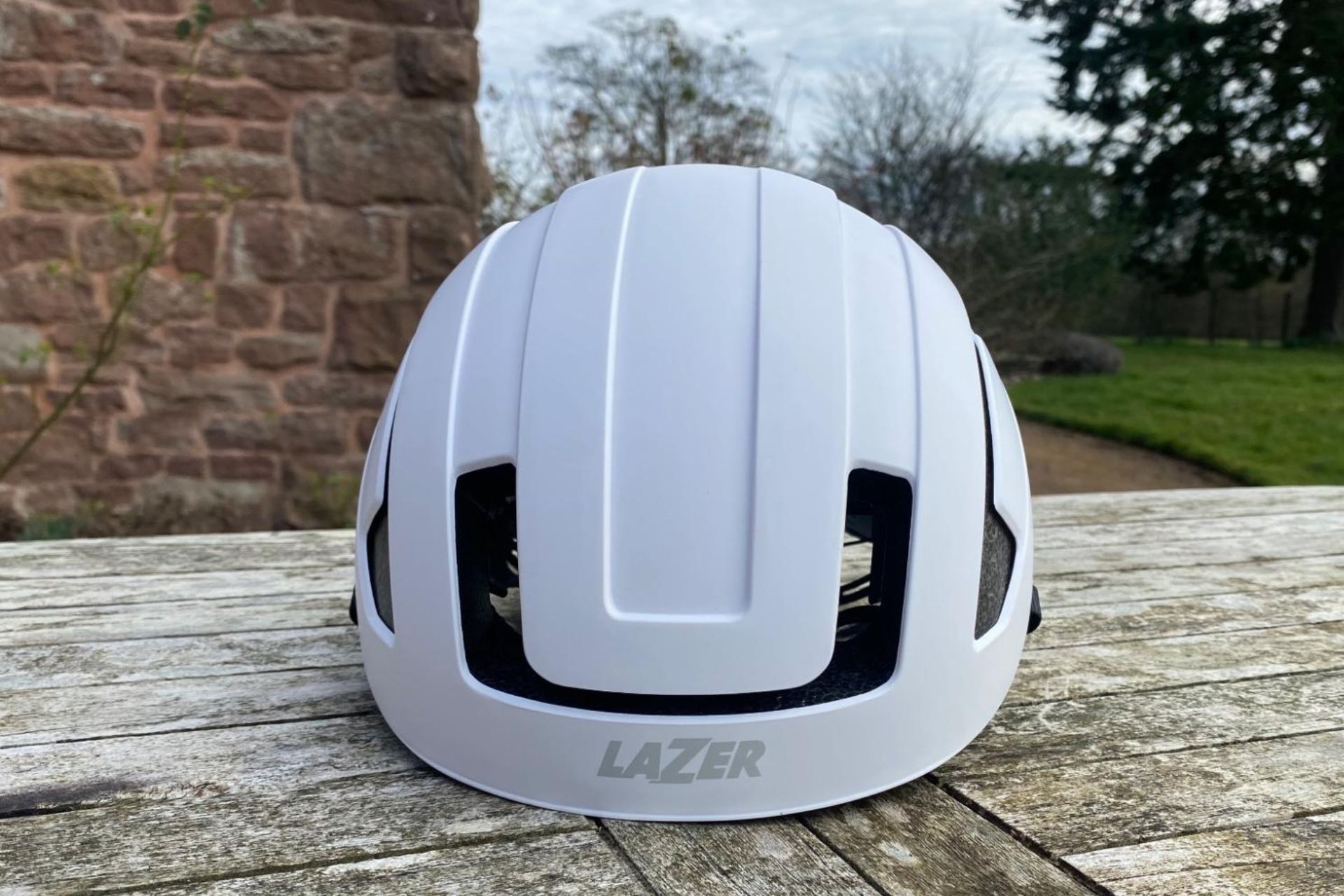
We’ve covered this in our review of Lazer's Vento KinetiCore helmet, but let’s go into details on what KinetiCore is as a reminder. This is Lazer's in-house response to MIPS: an anti-rotational safety device aimed at reducing the chance of concussions in the event of a crash and reducing rotational force that goes through the head. Whereas MIPS is an additional layer of protection within the helmet, it is not a structural part.
This is where KinetiCore shines, as the KinetiCore system is an integral part of the helmet design itself. Essentially, KinetiCore removes some of the EPS foam material (which is used in pretty much all bike helmets) and strategically places 'nodes' of EPS foam which act as crumple zones to distribute some of the energy/force in the event of a crash around the head rather than through it.
Additional benefits of this include reduced plastics required in the building process, lighter weight, and improved airflow through the helmet - hence why the CityZen is able to have such few vents yet maintains decent airflow. The CityZen also has an additional outer KinetiCore layer for enhanced protection.

The outer hard shell is made up of the same material as police riot shields, so should be pretty impenetrable from objects - which to me does raise questions as to why there is a portion of it missing from either side. In the pictures I thought this was a vent, but there is foam and no channel through here.
Lazer says both this and the front vent acts as an impact zone to deflect forces from both direct and rotational impacts. The shell does also seem to be able to come away slightly from the foam of the helmet, leaving gaps. The ABS shell also doesn’t extend all the way under the helmet, meaning that the foam is not protected and over time may get dented.
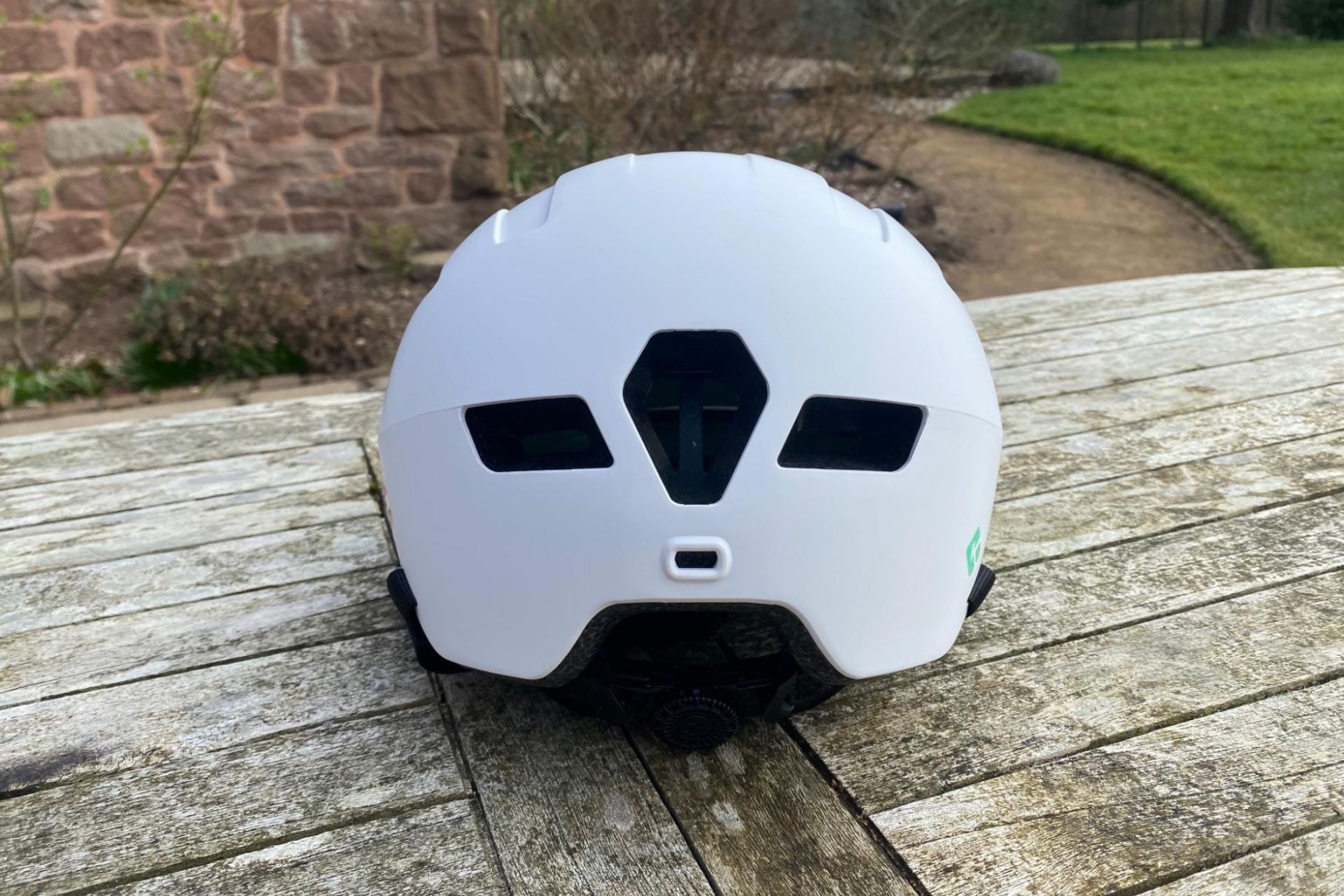
The rear of the helmet has an attachment point for Lazer’s universal LED. It’s a nice optional extra, with both the helmet and the light still coming in together at a lower price than many competitors. I didn’t have a light to test the security of the fitting system during the test period, though.
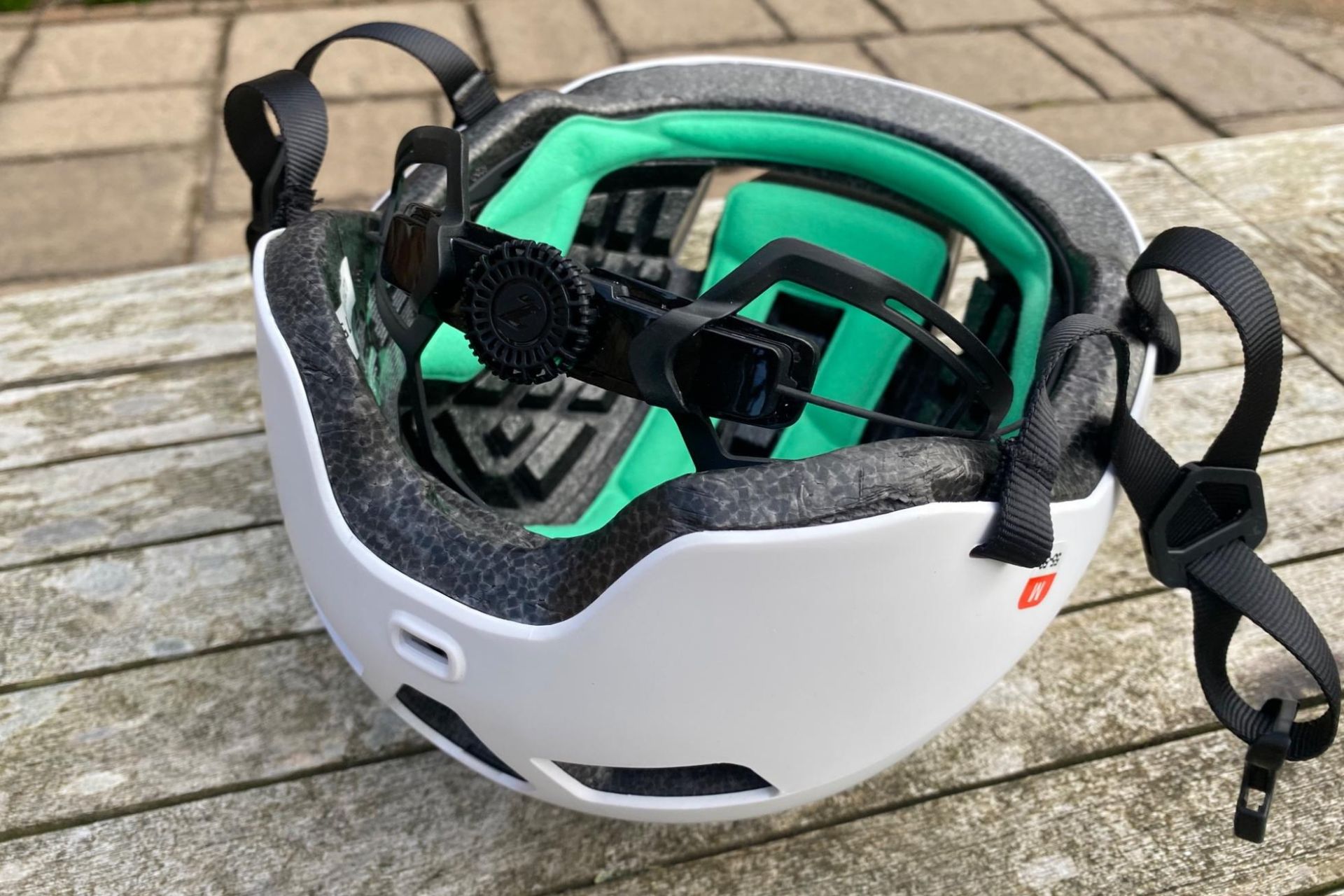
Fit and adjustments are supplied via a fully adjustable chin strap which can be adjusted to suit where your ears are, while the rear has a more conventional 'TurnSys' (rather than Lazer's 'RollSys') adjustment. The helmet feels very secure on the head. There is also removable and wicking Polygiene padding to aid comfort.
The ride
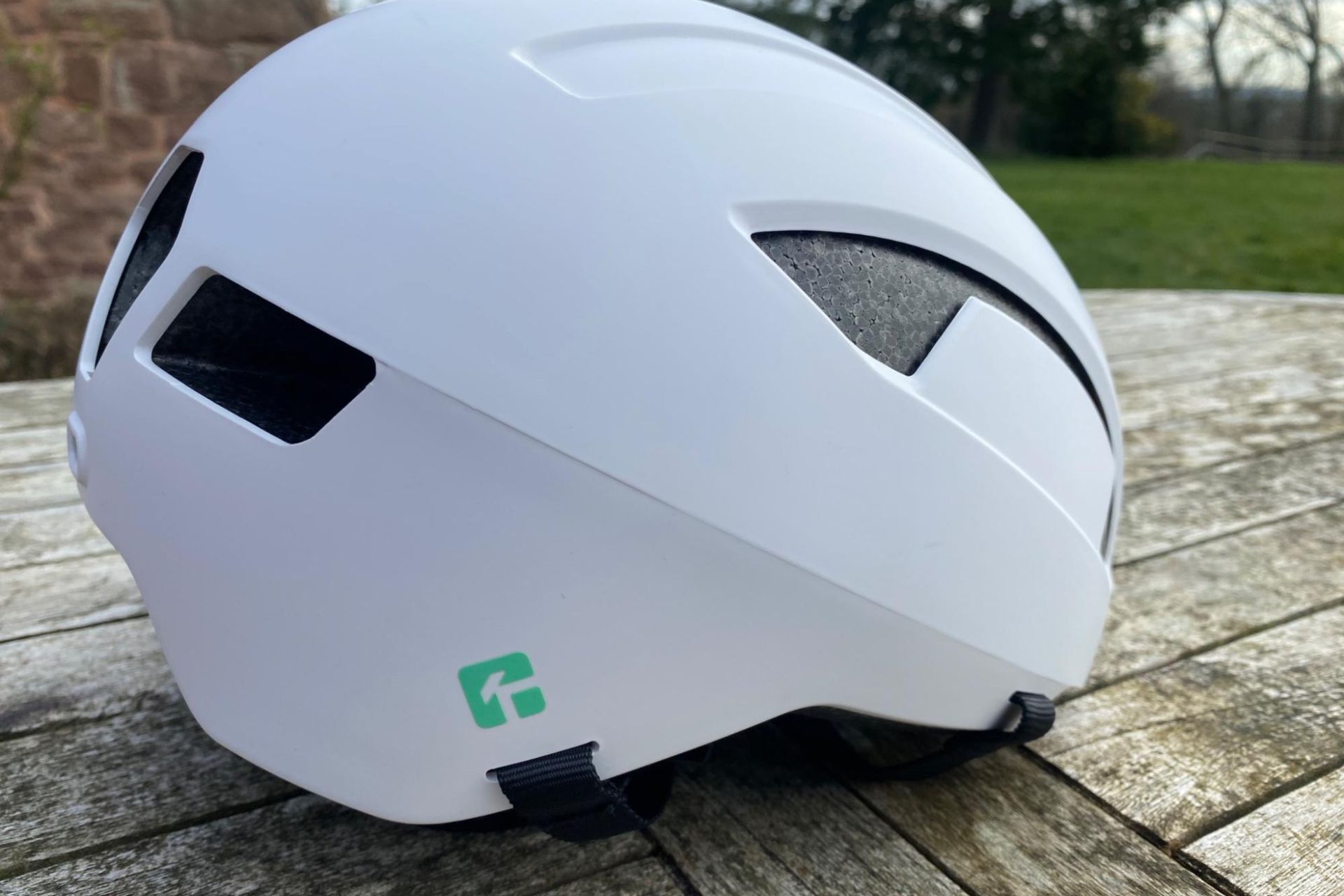
Thanks to the highly adjustable straps, as well as the 'TurnSys' retention dial, the helmet was incredibly easy to adjust, and it fitted well. The padding is comfortable and the KinetiCore inner means that there are more venting channels within the helmet. The padding is also comfortable and easily removable for cleaning.
Out riding, the air intake through the front vent was pretty good, but with the back vents being quite small - and not many in number - the actual airflow through the helmet wasn't the best. The result is that cold air just pools around the top of the helmet, and the back and sides run a little hotter. There also isn’t anywhere to store sunglasses.
On the head, the helmet doesn’t feel heavy at all and is wonderfully comfortable. It does look a little wide and possibly mushroom-like, but at the end of the day if you’re wearing a helmet the main concern should really be safety.
I am slightly cautious of the fact that the shell of the helmet I tested does appear to be able to come away slightly from the foam. I was also slightly surprised that given the double layer of KinetiCore and the outer shell that the helmet scored slightly lower than the Vento counterpart in the Virginia Tech Helmet Safety test, with the CityZen receiving a 4/5 and Vento 5/5.
Overall, I felt the helmet performed adequately for commuting in the colder weather at the moment. I do think there may be some limitations to ventilation when the weather gets warmer, though.
Value and conclusion
At $59.99 / £59.99, the Lazer CityZen KinetiCore is very good value when compared to other commuter bike helmets with rotational impact protection. The Kask Moebius comes in at $149.00 / £89.00 (without the integrated rear light, $160.00 / £119.00 with), while the Giro Caden Helmet II (MIPS) is $100.00 / £114.99.
Although all these helmets come with rotational impact protection, the CityZen does really triple down on the crash protection, with dual layer KinetiCore tech as well as the flexible impact zones on the front and sides. However, even with that added protection, in Virginia Tech Helmet Safety testing it scored 4/5, whereas Lazer's very own road model, the Vento, achieved top marks, 5/5. The Vento is of course a much pricier lid, costing $299.99 / £259.99.
The Lazer CityZen with KinetiCore is a very good value helmet coming in at a price significantly below any competitors in the commuter helmet market with this level of safety protection - Lazer’s KinetiCore anti-rotation protection has scored highly in independent testing.
The overall finish of the helmet is slightly lower quality than other commuting helmets I’ve tested, however those ones are more expensive. The performance is solid, possibly on par with some slightly more expensive helmets and this is a helmet I would happily commute in regularly.

Thank you for reading 10 articles this month* Join now for unlimited access
Enjoy your first month for just £1 / $1 / €1
*Read 5 free articles per month without a subscription

Join now for unlimited access
Try first month for just £1 / $1 / €1
Andy is a Sport & Exercise Scientist, fully qualified and experienced cycling coach, personal trainer and gym instructor. He spent 3 years on the road riding for a UCI cycling team and 7 years as a BC Elite rider.
After graduating in 2020 with first-class honours in his Sport & Exercise Sciences BSc, he continued to pursue his interest in research in the field of sport science alongside setting up his coaching business, ATP Performance, and working for USA-based firm, Wahoo Sports Science. He balanced this with racing at international level, competing in prestigious events such as the Tour of Britain and the Volta a Portugal.
-
 Remco Evenepoel obliterates Tenerife's Mount Teide Strava KOM
Remco Evenepoel obliterates Tenerife's Mount Teide Strava KOMReigning World Champion currently in altitude training before next week's Volta a Catalunya
By Tom Thewlis • Published
-
 Outdoor clothing brand Jack Wolfskin doubles down on bikepacking apparel and luggage
Outdoor clothing brand Jack Wolfskin doubles down on bikepacking apparel and luggageThe outdoor brand rolls into the adventure cycling market with a more refined collection
By Hannah Bussey • Published
-
 High-end bikes still in demand says Giant, as it announces 12.5% revenue increase
High-end bikes still in demand says Giant, as it announces 12.5% revenue increaseBut like much of the industry the Taiwanese manufacturer is also experiencing a surplus of low to mid priced stock
By James Shrubsall • Published

